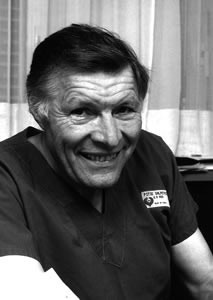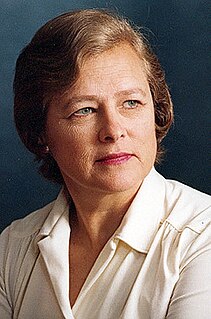Related Research Articles

Sir Magdi Habib Yacoub, is an Egyptian-British retired professor of cardiothoracic surgery at Imperial College London, best known for his early work in repairing heart valves with surgeon Donald Ross, adapting the Ross procedure, where the diseased aortic valve is replaced with the person's own pulmonary valve, devising the arterial switch operation (ASO) in transposition of the great arteries, and establishing the heart transplantation centre at Harefield Hospital in 1980 with a heart transplant for Derrick Morris, who at the time of his death was Europe's longest-surviving heart transplant recipient. Yacoub subsequently performed the UK's first combined heart and lung transplant in 1983.
Bruce A. Reitz is an American cardiothoracic surgeon, best known for leading the first combined heart-lung transplantation in 1981 with pioneer heart transplant surgeon Norman Shumway. He obtained an undergraduate degree at Stanford University a medical degree at Yale Medical School and completed an internship at Johns Hopkins Hospital (1971) and residencies and fellowships at Stanford University Hospital the National Institutes of Health (1974). He joined the surgical faculty at Stanford University (1978) then became chief of cardiac surgery at Johns Hopkins University (1982–92) and Chairman of the Department of Cardiothoracic Surgery at Stanford (1992–2005). In 1995 he conducted another pioneering operation: the first Heartport procedure, using a device that allows minimally invasive coronary bypass and valve operations. Reitz also played a major role in the resident education program at Stanford, which he reorganized and maintained.
O. H. "Bud" Frazier is a heart surgeon and director of cardiovascular surgery research at the Texas Heart Institute (THI), best known for his work in mechanical circulatory support (MCS) of failing hearts using left ventricular assist devices (LVAD) and total artificial hearts (TAH).
Norman Edward Shumway was a pioneer of heart surgery at Stanford University. He was the 67th president of the American Association for Thoracic Surgery and the first to perform an adult human to human heart transplantation in the United States.
James K. Kirklin is an American cardiac surgeon who has made significant scientific and surgical contributions in the fields of heart transplantation and mechanical circulatory support devices to assist the pumping action of the heart. He is Professor of Surgery, former Director of the Division of Cardiothoracic Surgery (2006-2016), Director of the James and John Kirklin Institute for Research in Surgical Outcomes (2016–present), former Co-Director of the University of Alabama at Birmingham (UAB) Comprehensive Cardiovascular Center and holds the James Kirklin Chair of Cardiovascular Surgery at UAB.
Mandeep R. Mehra is The William Harvey Distinguished Chair in Advanced Cardiovascular Medicine and a professor of medicine at Harvard Medical School. He is the medical director of the Brigham Heart and Vascular Center in Boston, Massachusetts, and specializes in advanced heart failure, mechanical circulatory support and cardiac transplantation.
Sharon Ann Hunt is a cardiology professor and Director of the Post Heart Transplant Programme in Palo Alto, California and is affiliated with Stanford University Medical Center, professionally known for her work in the care of patients after heart transplantation.

Christian Emile Cabrol was a French cardiac surgeon best known for performing Europe's first heart transplant at Pitié-Salpêtrière Hospital in 1968.
Philip Caves (1940–1978) was an Irish cardiothoracic surgeon. In 1972, while at Stanford University, he pioneered the use of the bioptome and transvenous endomyocardial biopsy in the early diagnosis of heart transplant rejection. It was considered the most significant advance in antirejection therapy of the time. Awarded the British American Research Fellowship in 1971, Caves worked with pioneering cardiothoracic surgeon Norman Shumway at Stanford and became staff surgeon leading the transplant programme by 1973. A year later he went to Edinburgh as a senior lecturer in cardiac surgery, where he became particularly interested in pediatric cardiac surgery.

Margaret E. Billingham was a pathologist at Stanford University Medical Center, who made significant achievements in the early recognition and grading of transplant rejection following cardiac transplantation, known as 'Billingham's Criteria'. She also described chronic rejection and techniques in heart endomyocardial biopsy.

The International Society for Heart and Lung Transplantation (ISHLT), established in 1981, is a professional organization committed to research and education in heart and lung disease and transplantation. It holds annual scientific meetings and publishes The Journal of Heart and Lung Transplantation. It also holds the worlds largest registry of heart and lung transplant data.

Stuart William Jamieson is a British cardiothoracic surgeon, specialising in pulmonary thromboendarterectomy (PTE), a surgical procedure performed to remove organized clotted blood (thrombus) from pulmonary arteries in people with chronic thromboembolic pulmonary hypertension (CTEPH).
Jack Greene Copeland is an American cardiothoracic surgeon, who has established procedures in heart transplantation including repeat heart transplantation, the implantation of total artificial hearts (TAH) to bridge the time to heart transplant, innovations in left ventricular assist devices (LVAD) and the technique of "piggybacking" a second heart in a person, while leaving them the original.

Michael Peter Kaye was an American surgeon and researcher who co-founded the International Society for Heart and Lung Transplantation (ISHLT) in 1981. He developed the society's registry and edited the Journal of Heart and Lung Transplantation.
Edward B. Stinson is an American retired cardiothoracic surgeon living in Los Altos, United States, who assisted Norman Shumway in America's first adult human-to-human heart transplantation on 6 January 1968 at Stanford University.

Bruno Reichart is a retired German cardiothoracic surgeon who performed Germany's first successful heart transplant in 1981 and its first combined heart–lung transplant in 1983.
John Wallwork CBE FRCS FMedSci, is a retired cardiothoracic surgeon and emeritus professor who performed Europe's first successful combined heart-lung transplant in 1984, and in 1986 performed the world's first heart-lung and liver transplant with Sir Roy Calne.
Eric A. Rose is an American cardiothoracic surgeon, scientist, entrepreneur and professor and Chairman of the Department of Population Health Science & Policy, and Associate Director for Clinical Outcomes at Mount Sinai Heart. He is best known for performing the first successful paediatric heart transplant, in 1984 while at NewYork–Presbyterian Hospital (NYP).

Keith Reemtsma was an American transplant surgeon, best known for the cross-species kidney transplantation operation from chimpanzee to human in 1964. With only the early immunosuppressants and no long-term dialysis, the female recipient survived nine months, long enough to return to work.
Jacques G. Losman is a Belgian transplant surgeon who helped to develop the heterotopic heart transplant model. In 1997, he received the lifetime service award of the International Society for Heart and Lung Transplantation.
References
- ↑ "William A. Baumgartner, M.D." Retrieved 9 September 2018.
- ↑ "ISHLT: The International Society for Heart & Lung Transplantation - Past Presidents". www.ishlt.org. Retrieved 9 September 2018.